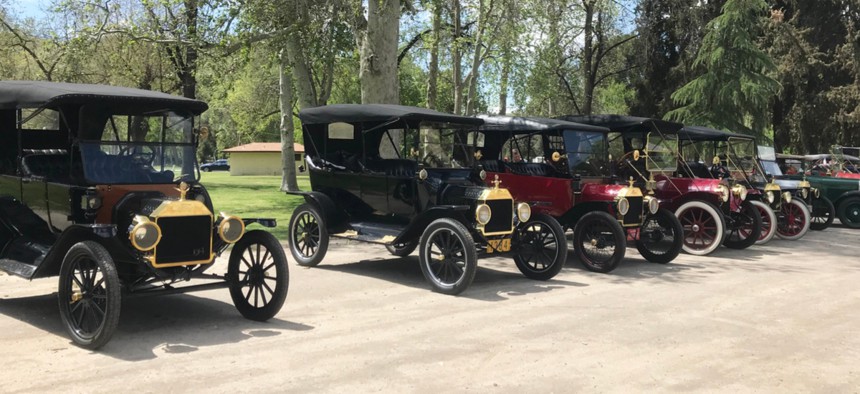This Electric Scooter Mayhem Sounds Just Like When Cars Were First Introduced

Shutterstock
Scooters are not killers (yet), but the anger they’ve inspired echoes that which accompanied the arrival of the first automobiles.
Henry Ford’s rolled Model Ts off his River Rouge assembly lines and onto the streets of America in 1908. Within a few years, Ford’s invention ushered in a new era of personal transport— and deadly mayhem on US streets.
Scooters are now invading America’s cities. Startups like Bird Rides, Spin, LimeBike, and Waybots, flush with hundreds of millions in venture capital, are turning Chinese-made electric scooters loose on US streets. The quick rentals can be ridden (almost) anywhere by someone with a smartphone app and a dollar, then left on the sidewalk for the next person. That’s predictably kicked up a backlash by city governments and residents who must now deal with the a bunch of scooters both scooting and lying around. Scooters are not killers (yet), but the anger they’ve inspired echoes that which accompanied the arrival of the first automobiles.
Surrendering the Streets to Automobiles
Before cars, urban streets were among the safest places for children to play and pedestrians to walk. Streetcars and horses were avoidable risks. But soon thousands and millions of car crowded onto the streets. The Automobile Club of America recorded the numbers of cars rose from 200,000 in 1909 to 2.25 million seven years later.
People were soon being killed by the new automobiles in ever greater numbers, three-quarters of them pedestrians, writes author Bill Loomis who researched Detroit’s history for his book On This Day. At first, drivers operated with little or no regulation. It wasn’t uncommon for fourteen-year-olds to drive delivery trucks. “Speeding” was a new concept, as was drinking and driving. Stop signs and streetlights (or “Street Semaphores”) hadn’t been invented. Politicians struggled with how to respond. In his book, Loomis recalls anecdotes that showed just how much cities struggled to conceive, and contain, the new menace on their roads:
“One young woman was detained by a policeman after driving on a Detroit sidewalk and killing several people. It had been her 26th arrest for reckless driving. She said she suffered from blackouts.
[Another] gruesome Detroit article described an Italian family whose 18-month-old son was hit and wedged in the wheel well of a car. As the hysterical father and police pried out the child’s dead body, the mother went into the house and committed suicide.
Cities printed “murder maps” showing locations of automobile deaths…Safety parades, started in the 1920s, became an emotional relief valve for public loss.
The state of Georgia’s Court of Appeals wrote: ‘Automobiles are to be classed with ferocious animals and … the law relating to the duty of owners of such animals is to be applied … . However, they are not to be classed with bad dogs, vicious bulls, evil disposed mules, and the like.'”
It wasn’t until the 1930s that driver education was required, and then 1960s that the federal government mandated systematic national traffic standards. Yet cars continue to kill more than 34,000 people per year in the US. Only in the last few years have a few cities decided the number of traffic deaths should be zero with new safety regulations.
The Electric Scooters Are Here
Now it’s scooters’ turn to take a spin (thankfully, with far less dire consequences). Startups, of course, are promoting their products by following the same playbook as cars: get them on the street, and figure out how to regulate them afterward. That strategy also propelled Uber and Lyft to multi-billion dollar valuations.
It’s anyone’s guess whether it will work for scooters, and the menagerie of electric conveyences from skateboards to “hoverboards” that are coming.
But cities are moving quicker this time. Austin and San Francisco have seized dozens of them. San Francisco has sent a cease and desist letter (paywall) to one company decrying the scooters as a “public nuisance” and “endangering public health and safety.” But if riders really demand them (as they did with ride-hailing services), it’s unlikely electric scooters will be down for long.
Michael J. Coren writes for Quartz, where this article was originally published.
NEXT STORY: Chicago OKs Punitive Strategy to Curb Double-Parking Drivers





